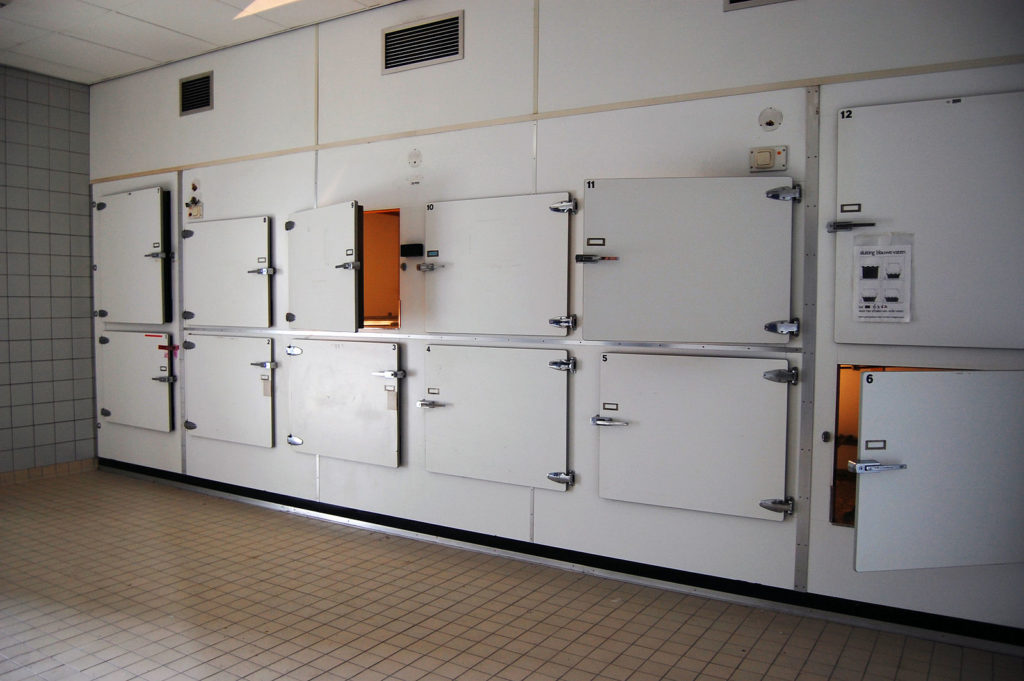Cases of COVID-19 are exploding across the United States. Cases have been on the rise for two weeks now, but the 7-day moving average of daily deaths is still relatively flat. A lot of people have wondered why. They expect our record-high cases to be accompanied by record-high deaths, not slow, steady death counts. That’s understandable.
Right now, the 7-day moving average of daily COVID-19 deaths in the United States, which had been falling, flattened out. Then, deaths took a jump with one anomalously high day. It’s not clear what’s going to happen next, and whether that anomalously high day was a data bug or the start of something real.
What’s up with the flat death count? Is this part of the “slow the testing down, please” thing? We’ve been closely following the data to help us answer questions like this. Let’s dive in.
Deaths are a lagging indicator
The first thing to understand is that deaths actually shouldn’t be rising yet. Sounds strange, right? But that’s because deaths are a lagging indicator. The death trend looks approximately like the new case trend, but it’s delayed and smoothed by several weeks. That’s because patients who become infected on any given day will die several weeks later and at different times. This pattern has been seen repeatedly in data from lots of countries. So, while deaths haven’t risen yet, we fully expect them to begin rising, and there’s no paradox here.
However, there are three major factors which mean that the crude case fatality rate (CFR) of this phase of the pandemic in the United States will likely be somewhat lower than that of the last phase. The peak of death numbers from this resurgence likely will not move in lockstep with the case/death ratio from the initial phase.
First major factor: ascertainment
While at the peak of confirmed cases in April, the USA had a test positivity rate of over 10%, and even close to 20%. Now, our test positivity rate is only 6.9%. While this rate is a significant increase from recent weeks, it’s lower than at the beginning of the first wave. This means we’re probably catching a higher percentage of the cases. So, we would expect the crude CFR to be lower even if nothing about the disease, patients, or treatments had changed.
Another factor: the age of the patients
Right now, the average age of new confirmed COVID-19 patients in the USA is younger than it was in the first wave. COVID-19 cases in the elderly tend to be more severe and more severe cases were more likely to surface in the first wave. But now that ascertainment is higher, we’re catching less severe cases in younger people.
Experts mostly agree that differing behavior in different age groups has tilted this phase of the epidemic younger to some extent. Because age is the biggest single risk factor for death among COVID-19 patients, this means (if true) that the infection fatality rate (IFR) of this phase will be lower. In turn, the crude CFR in this phase will also be lower.
Final factor: available treatments
Right now, we have two therapies that have been proven in randomized controlled trials and are being widely deployed for serious COVID-19 patients in the USA:
- Remdesivir
- Dexamethasone
Remdesivir may or may not reduce fatalities, but dexamethasone definitely does reduce them by about a third in the most serious cases. and they may work better together than alone. Remdesivir is in the process of going into a shortage that won’t be significantly alleviated until the fall, but it’s being used to the limit of the supply. This means that even if ascertainment and the patient mix were the same, IFR and CFR would be lower in this phase.
So, while it’s not a mystery that deaths haven’t risen yet, and we do expect them to rise, there are some important reasons to expect that it won’t be as bad (per confirmed case) as it was in April.
Later, when this phase of the pandemic is done, we’ll be able to use the CFRs from this stage to track whether we’ve gotten better at contact tracing and using new therapies. But the total death rate will depend on how many cases this resurgence causes and whether or not hospitals are overwhelmed. No one should take these factors as an occasion to be callous about public safety.
And we should also keep in mind that death isn’t the only thing to fear when it comes to COVID-19. Even ‘mild’ cases of the coronavirus can be frighteningly severe and cause long-lasting damage. So, yes, death rates are important to watch. But so are infection rates.

